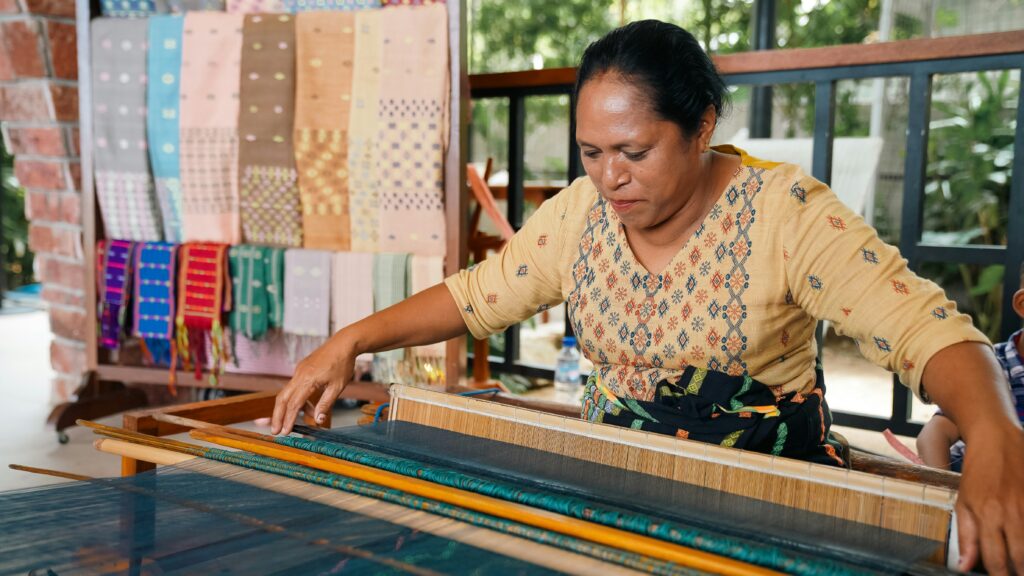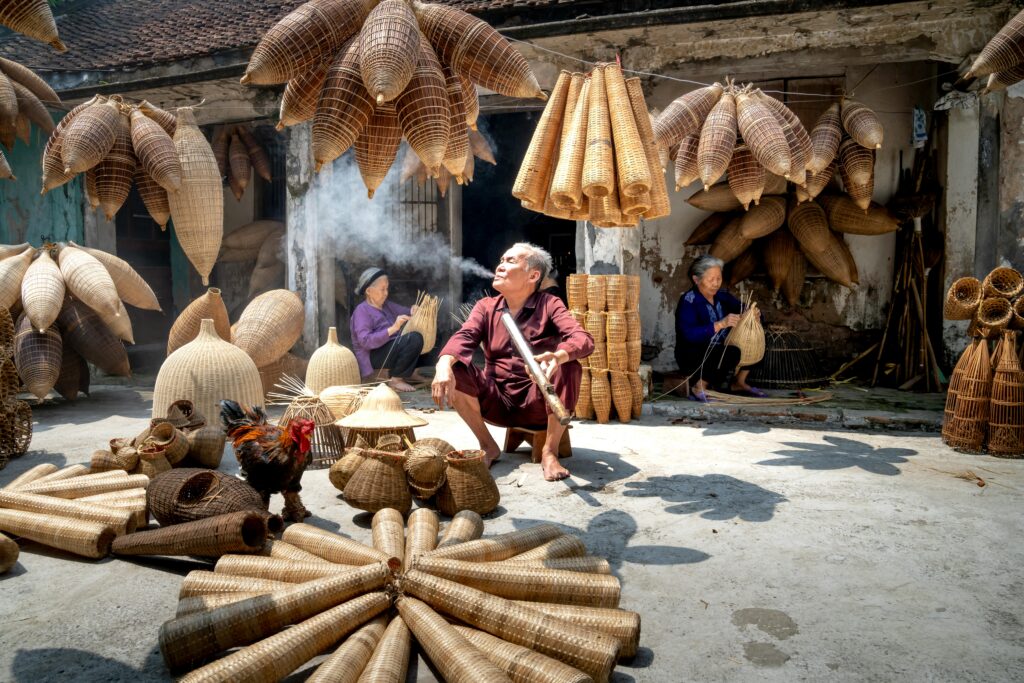Unique traditional crafts of Laos
Summary
Traditional crafts Laos reflect the country’s rich heritage through handmade textiles, pottery, and more. From vibrant woven fabrics to humble earthenware, the country’s artisan culture offers a deep, beautiful connection to local identity.
Introduction
While temples and rivers dominate the postcards from Laos, its real soul often lies in the rhythmic clack of a loom or the shaping of wet clay in a village pottery yard. Laos preserves a deep heritage of craftwork — not mass-produced souvenirs, but living traditions passed through generations.
Here’s a look into the intricate world of traditional Lao craftsmanship and how to experience it respectfully as a traveler.
1. Handwoven Textiles
🧶 What it is:
Weaving is arguably Laos’s most iconic craft, especially practiced by women in rural communities. Using backstrap looms or floor looms, artisans create stunning silk and cotton fabrics.

📍 Where:
- Luang Prabang (Ock Pop Tok Living Craft Centre)
- Sam Neua (famous for intricate patterns)
- Vientiane (textile cooperatives and boutiques)
🧵 Patterns with meaning:
- Traditional motifs represent nature, mythology, and protection symbols
- Common designs: Naga (serpent), rice stalks, elephants
Pro tip:
Buy directly from weavers or certified fair-trade shops — avoid markets selling mass-produced items imported from neighboring countries.
2. Pottery
🍶 What it is:
Lao pottery traditions date back over 1,000 years, with hand-shaped pots used for cooking, storage, and spiritual rituals.
📍 Where:
- Ban Chan Pottery Village (near Luang Prabang)
- Small family-run workshops along the Mekong
👀 What to look for:
- Rustic finish, earth-tone glazes
- Some pieces are sun-dried and wood-fired for unique texture
- Functional as well as decorative
Experience it:
Join a half-day workshop and try shaping your own bowl — many potters welcome curious visitors.
3. Bamboo & Rattan Weaving
Used for making baskets, mats, and furniture.

📍 Where:
- Countryside around Vang Vieng and Pakse
- Local markets often showcase these goods
Why it’s special: – 100% biodegradable, locally sourced – Patterns differ from village to village
4. Paper Making (Sa Paper)
📜 What it is:
A craft unique to northern Laos, especially around Luang Prabang. Sa paper is handmade from mulberry tree bark and often embedded with flowers, herbs, or threads.
🪷 Uses:
- Stationery
- Lampshades
- Decorative books and packaging
Visit:
The Sa Paper Handicraft Village offers tours and DIY workshops.
5. Silverwork & Jewelry
While less widespread than textiles, silver jewelry is still made in some regions, often featuring ethnic Hmong or Tai-Lue styles.
Items: – Hand-carved bracelets, earrings, and necklaces – Often engraved with tribal patterns or nature motifs
📍 Where:
- Hmong villages near Luang Prabang
- Night markets with artisan stalls
Cultural Context & Respect
- Photography: Always ask before taking pictures, especially of artisans at work.
- Pricing: Avoid hard bargaining for handmade goods — fair pay sustains these traditions.
- Workshops: Book through ethical organizations that support the communities, not just resellers.
Wood Carving Traditions
While less common than textiles or pottery, wood carving remains a quiet but rich craft in Laos, particularly among Buddhist artisans. Most temples feature intricately carved doors, columns, and statues.
📍 Where:
- Buddhist temples in Luang Prabang and Champasak
- Artisan workshops near Pak Ou Caves
🪵 What to look for:
- Scenes from Buddhist stories
- Stylized animals, guardians, floral motifs
Tip:
Wooden souvenirs should be sustainably sourced — always check for local origin and avoid antiques or protected wood types.
Supporting Local Artisans
Buying directly from makers or certified cooperatives ensures that your money helps preserve traditional skills. Consider joining workshops, leaving tips, and spreading the word — every small action supports the survival of traditional crafts Laos.
Conclusion
To explore Laos is to touch not just landscapes and temples, but also thread, clay, bamboo, and silver — each shaped by hand, memory, and meaning.
When you take home a piece of Lao craftsmanship, you’re not just buying a souvenir — you’re carrying a story, woven or fired with care. These traditional crafts Laos continue to thrive thanks to local artisans and mindful travelers. 😽





